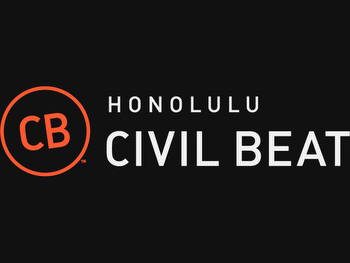Study finds residents are fine with state’s gambling landscape
Two-thirds of Connecticut’s residents are satisfied with the gambling options available in the state, a new bombshell-free study concludes.
“Impacts of Legalized Gambling in Connecticut,” posted Friday on the website of the state Department of Mental Health and Addiction Services, also finds the state does a good job caring for problem gamblers, whose ranks, somewhat surprisingly, have not swelled since Connecticut’s 2021 legalization of sports betting and online casino gaming.
State Sen. Cathy Osten, D-Sprague, who supported the expansion of gambling, said Monday she had reviewed the 205-page study and discovered no revelations in it.
“There is nothing in this report that people should not have already known,” she said.
DMHAS commissioned Gemini Research, of Northampton, Mass., to conduct the $1.2 million study, which was mandated by a 2022 law. Gemini, headed by Rachel Volberg, a research professor in the School of Public Health and Health Sciences at the University of Massachusetts Amherst, turned in the report months ago and was asked to make revisions, Volberg said.
In a 2023 survey of more than 5,000 respondents, researchers found that 62.6% of Connecticut residents were “recreational gamblers” at some point in the past year, while 4.9% were considered “at risk” for becoming problem gamblers and 1.8% were problem gamblers, defined as those with impaired control over gambling that had significant negative consequences for themselves or others.
The remaining 30.7% of respondents were “non-gamblers.”
The state’s rate of problem gambling was nearly the same as that found in a 2009 study and lower than rates found in 1996 (2.9%) and 1991 (3.2%), the report says. Connecticut’s rate is “mid-range compared to other states.”
“It’s interesting that it didn’t jump up, but not too surprising,” Volberg, a veteran researcher, said. “We saw peaks in problem gambling in the late 1990s and early 2000s, but decreases in participation and, slowly, problem gambling since then.”
The study notes that gross gambling revenue generated by southeastern Connecticut’s tribal casinos, Foxwoods and Mohegan Sun, has steadily declined since 2007, dropping by half.
Researchers relied on cell phone location data to determine that 50.5% of the casinos’ revenue comes from Connecticut residents, 19.9% from Massachusetts residents, 12.9% from New York residents, 8.8% from Rhode Islanders and 7.8% from people from other states and jurisdictions.
The proportions are very similar to those gathered by other means in 2015, suggesting the appearance of three Massachusetts casinos since then has had little impact on Connecticut casino revenue, the study says.
Volberg said she was interested to find New London County residents supply 36.2% of the Connecticut casinos’ in-state revenue, far more than residents of any other county, even though the county only accounts for 7.5% of the state’s population.
The study concludes Connecticut has now legalized virtually every form of commercial gambling and “building new casinos is not economically advisable.” Only more online casino gaming has the potential for revenue growth.
However, as the study also notes, the casino-owning tribes’ gaming compacts with the state grant them the exclusive right to provide online gambling, barring the Connecticut Lottery Corp. from doing so.
The study gives a glowing assessment of the state’s response to problem gambling.
“In general, it can be said that problem gambling treatment and prevention in Connecticut has been quite proactive and provides a good model for the rest of the country,” it says. “... (T)reatment resources currently available are more than adequate to meet the demand.”
The study looked at the correlation between gambling and a variety of social ills, including bankruptcy rates, which in Connecticut and New London County have declined over the past 10 years. The trend is the reverse of what the 2009 gambling impact study found.
“Family violence, divorce rates and child abuse rates have also been steadily declining in Connecticut,” the study says, though the state’s suicide rate has increased since 2008, as has the national rate.
Violent crime rates in Connecticut and New London County, including Ledyard and Montville, the towns that host the casinos, have all substantially decreased since the 1990s, and property crime rates in the same jurisdictions also have trended downward, according to the study.
While drunken driving arrests were stable across Connecticut from 2000 to 2010 and have since declined, researchers found driving under the influence of alcohol is still “a relatively common occurrence after leaving the casinos.”
































